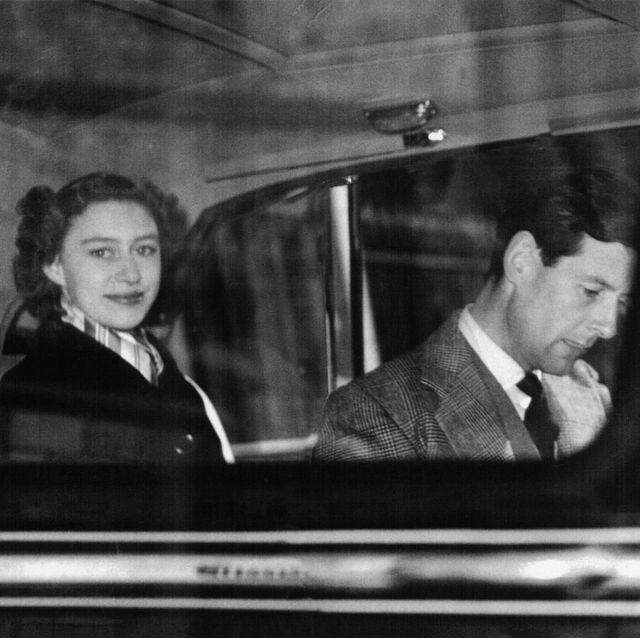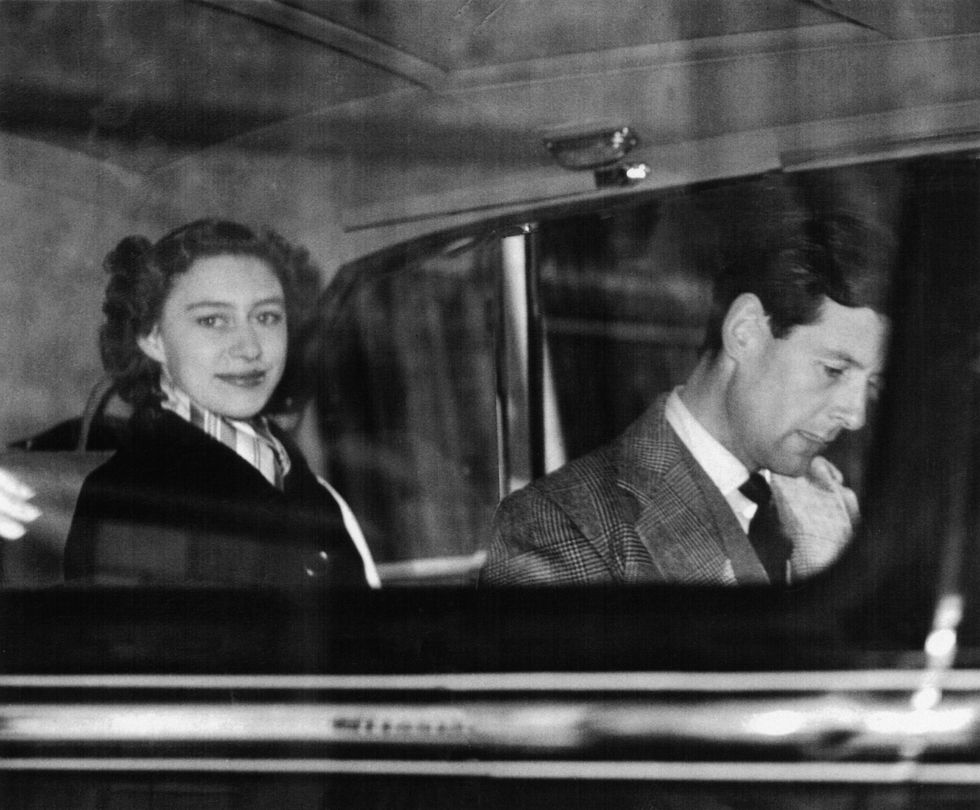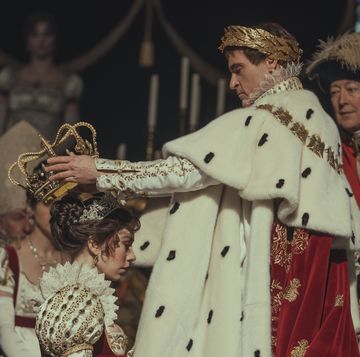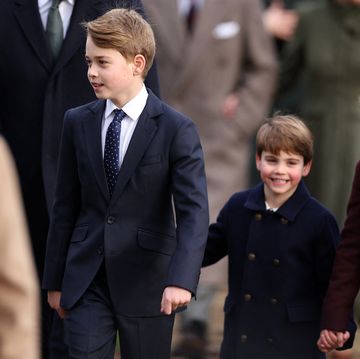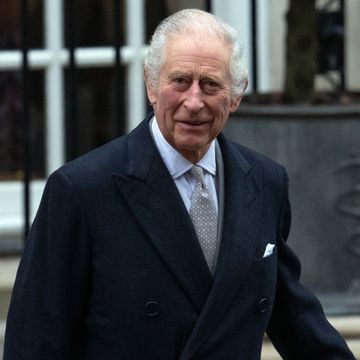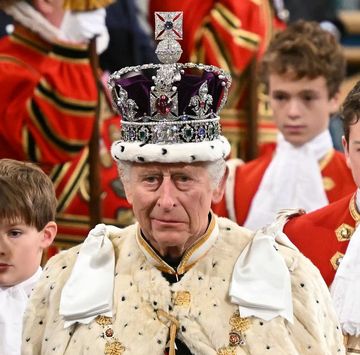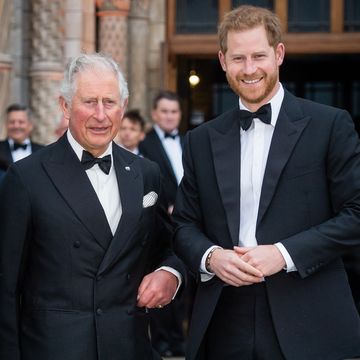Britain's Princess Margaret was beautiful, charming and had the world at her feet, but she never had an easy time in her love life. She was kept from marrying her first love and though initially happy when she wed another man, that relationship soon turned sour. A search for companionship ended up exposing her to condemnation. In her later years, she was often lonely. But at least her romantic lows made it easier for other members of the royal family to find love themselves.
READ MORE: Why Princess Margaret Was the Worst Party Guest
Princess Margaret's first fell in love with a divorcé
At Queen Elizabeth II's coronation in 1953, Princess Margaret was spotted intimately interacting with Group Captain Peter Townsend. Soon news of the romantic relationship between the princess and the royal equerry was public — which only brought more attention to the barriers their romance faced. Townsend, a hero in World War II, was a commoner, 16 years older than the princess, and he'd been divorced.
Because of the Royal Marriages Act of 1772, Margaret needed the queen's permission to marry. But Elizabeth and her advisors didn't want to sanction a marriage between a divorced man and a member of the royal family. At the time, the Church of England didn't recognize divorce, and the queen was head of the church. To separate him from Margaret, Townsend was sent abroad as an air attaché. His departure was scheduled so he would be gone by the time Margaret returned from a tour of Rhodesia.
Margaret and Townsend, who'd stayed in touch while he was abroad, were reunited in October 1955. By then, she was 25 and no longer needed the queen's permission to marry. But at the end of the month, Margaret abandoned the relationship. Her public statement said in part: "I would like it to be known that I have decided not to marry Group Captain Townsend. I have been aware that, subject to my renouncing my rights of succession, it might have been possible for me to contract a civil marriage. But mindful of the Church’s teachings that Christian marriage is indissoluble and conscious of my duty to the Commonwealth, I have resolved to put these considerations before others. I have reached this decision entirely alone…"
For years, conventional wisdom held that Margaret had been pressured by the church, the government, and the palace to make this decision. She'd supposedly been threatened with the loss of her title, her place in the line of succession, and her royal income, and would have had to live outside England should she marry Townsend. But in 2004, documents in the National Archives showed that the government of Prime Minister Anthony Eden (a divorcé himself) had a plan to smooth the way for Margaret's marriage: She would have had to give up her place in the line of succession for herself and her children, but would otherwise have kept her status, and income, as a royal. Given that public opinion was overwhelmingly in favor of letting Margaret marry, the plan was a smart move.
So why didn't Margaret wed Townsend? Her sister Elizabeth was healthy and already had two children who'd joined the line of succession ahead of Margaret, so giving up a claim to the throne seemed minimal (though Margaret did embrace all aspects of her preeminent royal status). Perhaps the two years she'd spent apart from Townsend had raised enough doubts that she didn't want to marry him after all. Before her reunion with him, she'd written to Prime Minister Eden to say she needed to see Townsend before she could decide whether or not to marry him. In the end, whatever the cause, she opted not to become his wife.
READ MORE: Princess Margaret: What Really Happened on Her 1965 Tour of the United States
She got married to a photographer who was rumored to be bisexual
When Margaret was 26, she became engaged to a wealthy member of her social circle, Billy Wallace. She was still expected to marry — as were most women at the time — and considered him "somebody one at least liked." But the engagement was short-lived — Margaret ended it after Wallace told her he'd had a fling while vacationing in the Bahamas.
Speculation about her various suitors continued until February 1960, when Margaret again stunned the world by announcing her engagement to photographer Anthony Armstrong-Jones. Armstrong-Jones had never been married, but otherwise was a surprising choice for the conservative establishment to accept as a spouse for the princess. He was a commoner who had to work for a living. He was also rumored to be bisexual. He never publicly confirmed his sexuality, but did once state, "I didn't fall in love with boys, but a few men have been in love with me."
But Margaret's family wanted her to be happy, and they'd all been charmed by Armstrong-Jones. Margaret and her fiancé shared an interest in the arts, music and clothes. And they had sexual chemistry — the princess would sometimes visit him in an out-of-the-way rented room where they could be alone. Margaret's first love may also have played a role in her engagement. In October 1959, she learned Townsend was marrying someone else. She reportedly later explained, "I received a letter from Peter in the morning and that evening I decided to marry Tony. It was no coincidence."
After marrying on May 6, 1960, Margaret and her husband were initially very happy. They went on to have two children, with Armstrong-Jones becoming Lord Snowdon so the children would have titles. Her new husband also helped Margaret enjoy and be a part of 1960s culture. Margaret would later say, "He was such a nice person in those days. He understood my job and pushed me to do things. In a way, he introduced me to a new world."
Princess Margaret and Lord Snowdon cheated on each other their entire marriage
Before Margaret's wedding, her husband-to-be's father said, "It will never work out. Tony's a far too independent sort of fellow to be subjected to discipline. He won't be prepared to play second fiddle to anyone. He will have to walk two steps behind his wife, and I fear for his future." And Snowdon did tire of royal life, abandoning his role as royal consort to pursue career opportunities. Feeling possessive, and lonely, Margaret would try to track him down, only for him to pull farther away.
While Margaret could be imperious, having been raised to expect deference, Snowdon became cruel and mocking towards her. He would leave her malicious notes, such as one titled: "Twenty-four reasons why I hate you." He also had affairs. In fact, he hadn't been faithful from the start. While he and Margaret were on their honeymoon, the wife of a friend, Camilla Fry, gave birth to his child (Margaret apparently never knew about this; paternity was only confirmed by a DNA test taken decades later).
Margaret ended up finding lovers of her own. One was Robin Douglas-Home, who, after facing other setbacks, committed suicide 18 months after their liaison had ended. Among her other rumored romantic partners were Mick Jagger and Peter Sellers. Then, in September 1973, she was introduced to a younger man who would contribute to the final collapse of her marriage: Roddy Llewellyn. Margaret and Llewellyn fell in love soon after they met in Scotland. During their time together, she occasionally visited him while he was living on a commune, and he made numerous trips to her home on the Caribbean island of Mustique.
In 1976, Margaret and Llewellyn were photographed together on Mustique. They were with another couple, but the photo was cropped so Margaret and Llewellyn — both in swimsuits —appeared to be alone. Their affair not only became the center of attention, but it also gave Snowdon the opportunity to move out of Kensington Palace. While Margaret was criticized for having a "Toy Boy" lover (though the age difference was about the same as the one between her and Townsend), Snowdon received public sympathy, with scant attention paid to his own philandering. On March 19, 1976, it was announced: "HRH The Princess Margaret, Countess of Snowdon, and the Earl of Snowdon have mutually agreed to live apart."
Princess Margaret became the first royal to divorce in over 400 years
The queen wanted Margaret to end things with Llewellyn, but the princess felt he was a source of love and support she couldn't do without. She stayed in the relationship even as Llewellyn decided he wanted to become a rock singer, which brought more negative attention Margaret's way (his LP, Roddy, would be a flop). Criticism of Margaret included calls in Parliament for her royal allowance to be cut off.
In May 1978, Margaret filed for a divorce, which was granted in July. This made her the first member of the royal family to divorce since Henry VIII in 1533. Snowdon married a pregnant Lucy Lindsay-Hogg in December 1978. He was also unfaithful to his second wife: In 1997, his longtime affair with one journalist was revealed after her suicide and in 1998, another paramour gave birth to his son.
Margaret's liaison with Llewellyn ended in 1981, as he'd fallen in love with and wanted to marry someone else. The princess accepted this and even congratulated the couple. Margaret invited Peter Townsend to lunch with her — and others — at Kensington Palace in the summer of 1992, when she was 61 and he 77. He died three years later; a statement said Margaret was "saddened by the news."
Though Margaret's later years included many friends and companions, she reportedly often felt lonely. But thanks to what she lived through, it was easier for Princess Anne, Prince Charles and Prince Andrew to divorce. And though Camilla Parker-Bowles and Meghan Markle were divorcées themselves, they were each able to marry their respective royal mates. Hopefully, today's royal family appreciates how Margaret helped pave the way for their romantic happiness.
